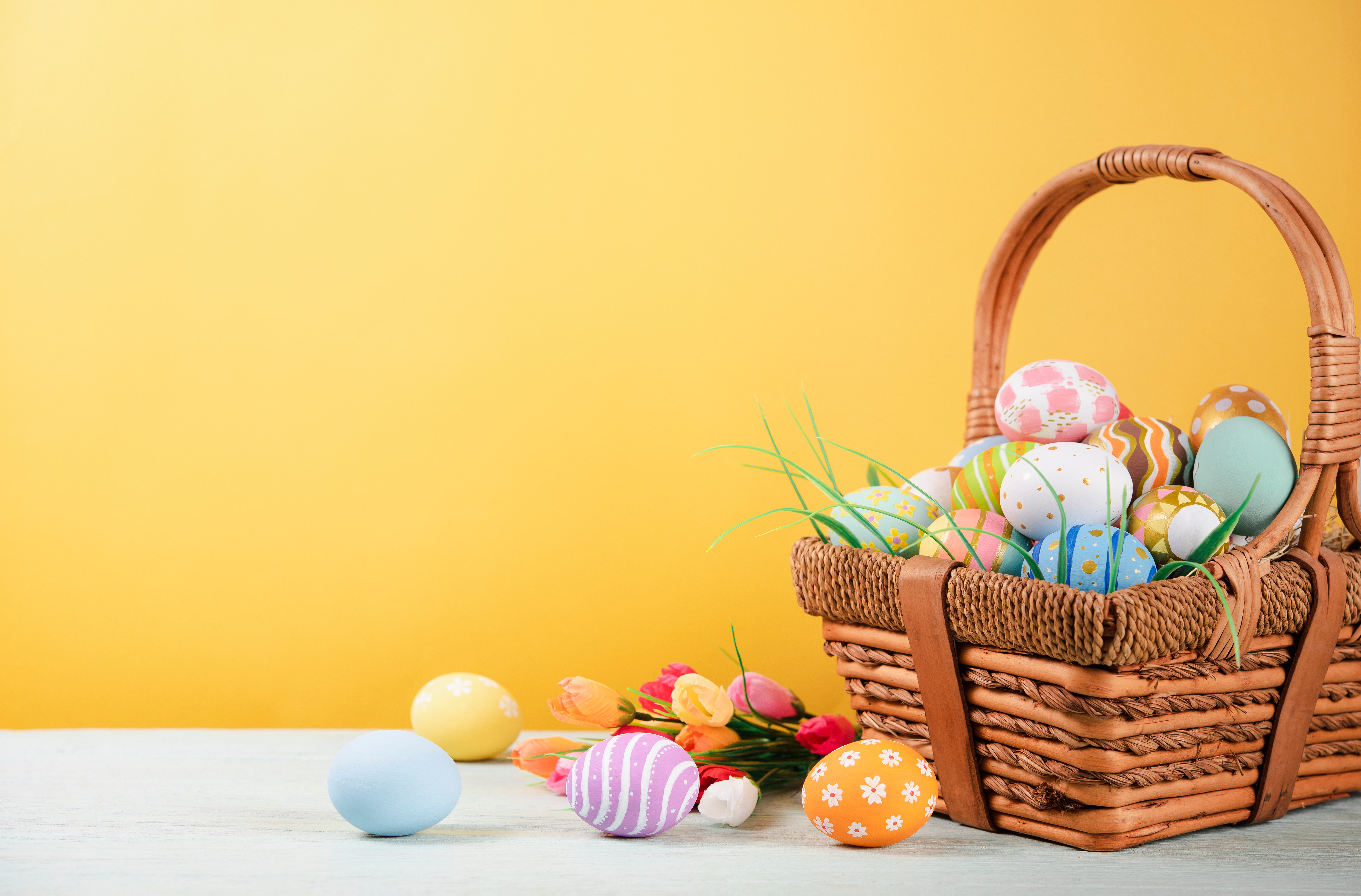
Vocabulary:
I will read the words, meanings, and sample sentences. Then, repeat after me.
- mythical /MITH-i-kuhl/
- hare /hair/
- hunt /huhnt/
- edible /ED-uh-buhl/
- scrumptious /SKRUHMP-shuhs/
[adjective] – mythical
The unicorn is a famous mythical creature.
[noun] – an animal like a large rabbit that can run very fast and has long ears
The hunter aimed at the hare, but it was too quick for him.
[noun] – a search for something or someone
Michael participates in Easter egg hunts every year.
[adjective] – suitable or safe for eating
Be careful looking for mushrooms in the wild. Some of them aren’t edible.
[adjective] – tasting extremely good
The parfait was absolutely scrumptious!
Article reading:
Please read the whole article. Then, I will check your pronunciation and intonation.
Eggs come from chickens, but the same can’t be said for Easter eggs. Where did they and the tradition of Easter celebration originate?
Easter eggs are created by the Easter bunny, a mythological creature who gives eggs to children. The modern rabbit is based on the mythical Osterhase, a 17th-century German egg-laying hare. Only Jutland and the island of Langeland in Denmark practiced the tradition until the 1920s. The rabbit’s historical use as a symbol of fertility links to its significance at Easter: It occurs in the spring, a season of rebirth and new life when flowers blossom and baby animals are born. Nowadays, Easter egg hunts are a popular Easter Sunday tradition. The Easter Bunny visits Scandinavian households and hides chocolate eggs in gardens or parks for children to find on Easter Sunday. Cadbury’s debuted the modern chocolate Easter egg in 1875, two years after England’s J.S. Fry & Sons ideated the first chocolate egg. Most likely, John Cadbury recognized an opportunity to profit from the popularity of Easter decorative eggs by turning them into edible eggs. Meanwhile, the practice of decorative eggs is actually rather ancient, as evidenced by 60,000-year-old adorned and engraved ostrich eggs discovered in Africa. Decorative eggs have been used since the 13th century as an Easter tradition.
Easter eggs could have meant any hidden surprise by the end of the 20th century, but the real deal, whether made of scrumptious chocolate or actual eggs, continues to delight every Easter.
Easter eggs are created by the Easter bunny, a mythological creature who gives eggs to children. The modern rabbit is based on the mythical Osterhase, a 17th-century German egg-laying hare. Only Jutland and the island of Langeland in Denmark practiced the tradition until the 1920s. The rabbit’s historical use as a symbol of fertility links to its significance at Easter: It occurs in the spring, a season of rebirth and new life when flowers blossom and baby animals are born. Nowadays, Easter egg hunts are a popular Easter Sunday tradition. The Easter Bunny visits Scandinavian households and hides chocolate eggs in gardens or parks for children to find on Easter Sunday. Cadbury’s debuted the modern chocolate Easter egg in 1875, two years after England’s J.S. Fry & Sons ideated the first chocolate egg. Most likely, John Cadbury recognized an opportunity to profit from the popularity of Easter decorative eggs by turning them into edible eggs. Meanwhile, the practice of decorative eggs is actually rather ancient, as evidenced by 60,000-year-old adorned and engraved ostrich eggs discovered in Africa. Decorative eggs have been used since the 13th century as an Easter tradition.
Easter eggs could have meant any hidden surprise by the end of the 20th century, but the real deal, whether made of scrumptious chocolate or actual eggs, continues to delight every Easter.
Discussion Questions:
I will read each question. Then, please answer them.
- Have you ever celebrated Easter? Why or why not?
- Are there any special foods associated with Easter in your country? Please tell me more about it.
- Which among Easter egg hunts, eating chocolate eggs, and decorating eggs would you enjoy the most and why?
- Do you think Easter activities will make children more active and improve their social skills/talents?
- Should Easter traditions be done worldwide? Why or why not?
Summarization
Please summarize the whole article using your own words and expressions. You will have one minute to prepare before you answer.
Describe:
Please explain the definition of each word listed below based on your understanding. You can provide example sentences if needed.
- historical
- debut (verb)
- profit
- practice (noun)
- ancient